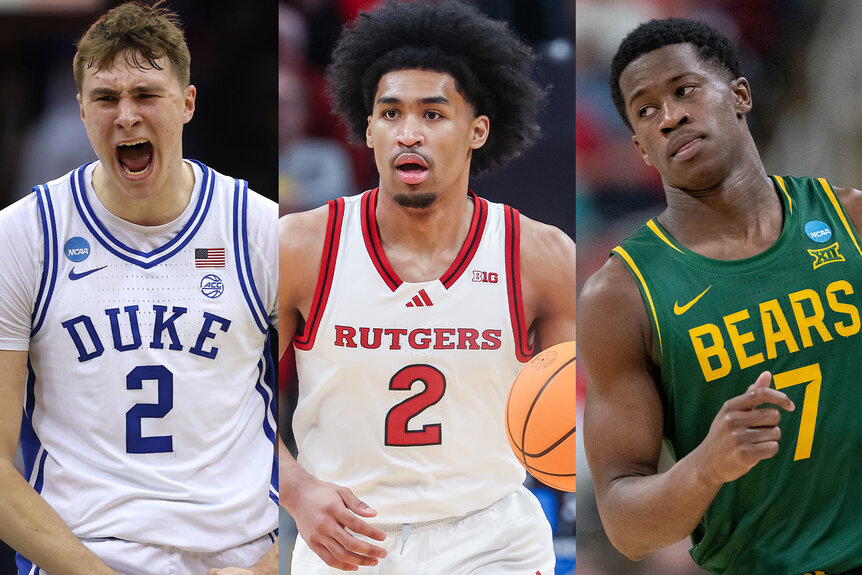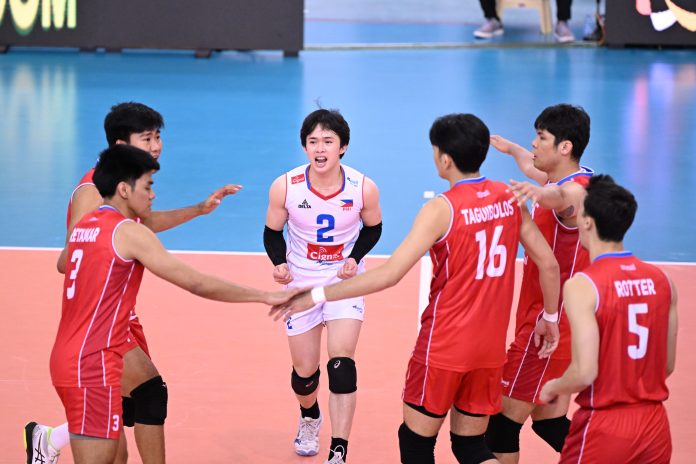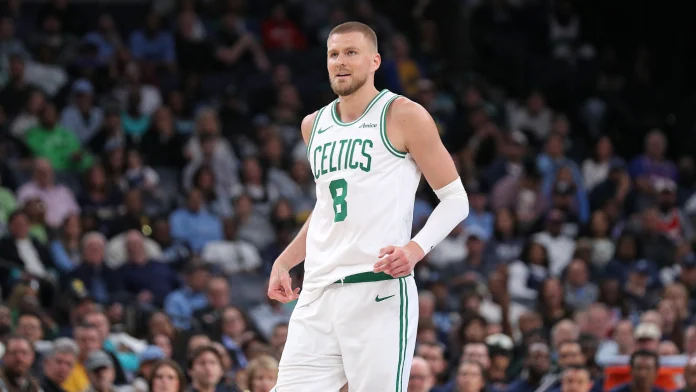#1 Dallas Mavericks: Cooper Flagg, PF, Duke
The Mavericks, defying 1.8% lottery odds, landed Flagg to fill a playmaking void with Kyrie Irving recovering from an ACL tear. His ability to contribute immediately on a playoff-contending team, alongside Luka Doncic, positions him as a potential franchise face. Dallas GM Nico Harrison emphasized pairing Flagg with P.J. Washington, signaling no major frontcourt trades. Flagg’s mental makeup and versatility make him ideal for a competitive environment.
#2 San Antonio Spurs: Dylan Harper, PG/SG, Rutgers
The Spurs, jumping from No. 8 to No. 2, prioritized talent over fit despite a crowded backcourt with De’Aaron Fox and Rookie of the Year Stephon Castle. Harper’s visits with San Antonio showed mutual enthusiasm, and the Spurs see him as a cornerstone alongside Victor Wembanyama. Roster construction concerns (e.g., shooting) will be addressed later. His Dynasty value is closer to Copper Flagg’s value than Edgecombe and other prospects – that’s how good Harper is.
#3 Philadelphia 76ers: VJ Edgecombe, SG, Baylor
The 76ers, with a 5.5% lottery chance, selected Edgecombe to bolster their guard depth. The question here is how Edgecombe’s defensive prowess and athleticism will provide immediate value if Philly stays healthy. Other than that, the 76ers has built a very solid backcourt for their future.
#4 Charlotte Hornets: Kon Knueppel, SG/SF, Duke
The Hornets, dropping to No. 4, added Knueppel to complement their young core. His shooting and playmaking address Charlotte’s need for perimeter scoring, fitting well alongside players like LaMelo Ball.
#5 Utah Jazz: Ace Bailey, SF, Rutgers
The Jazz took a chance on Bailey despite his reservations, likely due to his talent and potential as a wing scorer. Utah’s clear need for wing talent and willingness to give him runway suggest they see him as a long-term piece, though his adjustment may take time.
#6 Washington Wizards: Tre Johnson, SG, Texas
The Wizards, the NBA’s youngest team, added Johnson to a core including Alexandre Sarr and Bub Carrington since they missed out on Ace Bailey. His scoring addresses Washington’s offensive needs, though his development will be key especially with all the veterans the Wizards have in the roster as of the moment.
#7 New Orleans Pelicans: Jeremiah Fears, PG, Oklahoma
The Pelicans, took Fears to add upside players in the team. His selection over higher-rated prospects suggests a focus on playmaking. This was a little bit weird since they just acquired Jordan Poole and they also got several more guards in the roster but it’s obvious that the Pelicans is doing some changes under their new regime.
#8 Brooklyn Nets: Egor Demin, PG/SG, BYU
The Nets, with multiple picks (8, 19, 22, 26, 27), took a high-upside swing. Demin’s size and passing could complement their young core, but his rawness is very evident. This would’ve been a decent pick but it is very questionable that Brooklyn picked a couple more similar playmaking guards in the first round.
#9 Toronto Raptors: Collin Murray-Boyles, SF/PF, South Carolina
Collin Murray-Boyles, selected by the Toronto Raptors with the 9th overall pick in the 2025 NBA Draft, brings a high-energy, defense-first skill set that aligns with the Raptors’ identity under head coach Darko Rajaković. However, his selection raised eyebrows due to roster fit concerns, particularly around spacing, given Toronto’s existing personnel.
#10 Phoenix Suns (via trade): Khaman Maluach, C, Duke
Khaman Maluach is an excellent fit for the Phoenix Suns’ new defensive-minded identity, bringing elite rim protection, a 7’6¾” wingspan, and rim-running athleticism to a team that ranked 27th in rim protection and 20th in rebounding. His immediate role as a bench center behind Mark Williams leverages his defensive tools and lob-finishing (71.2% FG), while his 18-year-old frame and 76.6% free-throw shooting suggest a pathway to a stretch-5 role. The Suns’ crowded frontcourt and spacing concerns pose challenges, but Maluach’s high floor and ceiling make him a cornerstone for their post-Durant rebuild.
#11 Memphis Grizzlies: Cedric Coward, SF, WSU
He could be the Bane replacement. At 6’6” with a 7’2¼” wingspan and 38.5-inch vertical, Coward has an elite physical profile for a wing. His long strides, strong frame, and ability to absorb contact make him effective in the post and driving to the rim, despite not being an above-the-rim athlete.
#12 Chicago Bulls: Noa Essengue, PF, France
Noa Essengue is an ideal fit for the Chicago Bulls’ rebuild, bringing elite athleticism, defensive versatility, and transition scoring to a team prioritizing youth and pace. His 6’10” frame, 7’1” wingspan, and high motor complement Matas Buzelis, forming a promising frontcourt duo with switchable defense and open-court dynamism. However, his raw offensive game, particularly his 28.9% three-point shooting, and lack of strength pose challenges, requiring patient development to reach his Siakam-like ceiling.
#13 New Orleans Pelicans: Derik Queen, C, Maryland
Derik Queen, acquired by the New Orleans Pelicans via a trade with the Atlanta Hawks for the 13th overall pick in the 2025 NBA Draft, brings a highly skilled offensive game and significant upside to a Pelicans roster in flux. The trade, which cost New Orleans the 23rd pick (Asa Newell) and an unprotected 2026 first-round pick (the better of their own or Milwaukee’s), has sparked debate due to its high cost and Queen’s fit alongside stars like Zion Williamson.
#14 San Antonio Spurs: Carter Bryant, SF/PF, Arizona
Carter Bryant brings elite defensive versatility, 37.1% three-point shooting, and a high floor 3 and D profile to a young core centered on Victor Wembanyama, Dylan Harper, De’Aaron Fox, and Stephon Castle. His 6’11¾” wingspan, 39.5 inch vertical, plus switchable defense address San Antonio’s need for perimeter stopping power, while his catch and shoot ability and cutting provide spacing for a team ranked 22nd in three point percentage. Though his limited creation and defensive discipline pose challenges, the Spurs’ coaching staff and low-usage role mitigate these, positioning him as a rotation player with potential to develop into a starting-caliber wing.
#15 Oklahoma City Thunder: Thomas Sorber, C, Georgetown
Thomas Sorber, selected by the Oklahoma City Thunder with the 15th overall pick in the 2025 NBA Draft, brings a physically imposing, high-IQ center profile to a championship-caliber team looking to sustain its dominance. At 6’9” (listed as 6’10” in some sources), 255-263 lbs, with a 7’6” wingspan, Sorber’s blend of old-school toughness and modern versatility makes him an intriguing addition to the Thunder’s deep roster. His draft stocks dropped due to injury concerns but that’s something OKC is very willing to manage. I guess the best can still get better in the NBA.
Other Notable Picks:
- Yang Hansen was picked #16, was a total shocker for this year’s draft class. His fit with the crowded front court of the Blazers and his rawness drew a lot of question to this pick – making it possibly the most reached pick this year
- Kasparas Jakucionis fell to Miami at #20. This could be the value pick of the draft and on top of that it solves the Heat’s issue in their backcourt.
- Jase Richardson is another player that fell in the drafts and solves Orlando Magic’s need of added outside shooting.








